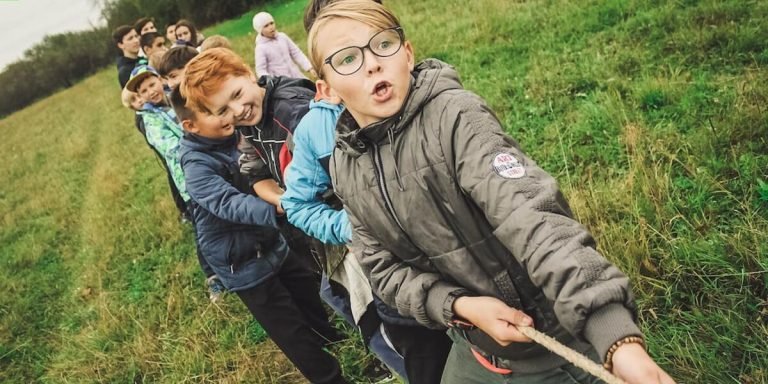Proprioception Autism: Understanding the Connection and Its Role in Childhood Development
Proprioception Autism is a term that with its increasing implications, has found paramount importance in the realm of childhood development. For parents and educators alike, understanding this connection isn’t just crucial but also necessary to aid children on the autism spectrum successfully navigate their world.
This concept primarily revolves around our kinesthetic sense – proprioception; however, when integrated into an autistic child’s life it sheds light on new perspectives for enhancing special education techniques. The aim must be not only to comprehend ‘proprioception autism’ better but also harnessing it as an essential resource for support during early developmental stages.
Did you know?
Children with autism often experience proprioceptive dysfunction, which means they have a hard time sensing their body’s position or movement. This can impact fine motor skills and coordination in childhood development.
Understanding Proprioceptive Dysfunction in Autism
Children with Autism Spectrum Disorder (ASD) often experience proprioceptive dysfunction, a sensory processing disruption that impacts the ability to sense body position, movement, and force. This difficulty in interpreting stimuli directly affects physical skills such as coordination and balance making everyday tasks daunting for these children. Proprioception acts as our internal GPS that helps us know where we are physically located within space and without it functioning optimally, navigating through day-to-day activities becomes challenging.
In recent years though, advancements in technology have offered promising solutions to this challenge plaguing those living with autism. Innovative technologies now allow us to integrate therapeutic practices into daily routines seamlessly enhancing the quality of life for autistic individuals considerably better compared to past decades.
One significant shift has been integrating virtual reality (VR) systems into special education resources providing highly engaging environments designed specifically around each child’s needs. These reliable VR tools simulate real-world situations allowing safe exploration while offering immediate feedback on their movements encouraging self-correction aiding improvements in proprioceptive abilities over time.
On another front is assistive robotics which proffers hands-on learning experiences targeting motor development at its core by mimicking human motion patterns during rehabilitation exercises hence improving proprioceptive awareness among ASD children remarkably well.
While incorporating technological innovations cannot replace traditional therapies entirely yet they supplement them admirably broadening the scope of effective interventions possible today beyond what was formerly conceivable thus nurturing greater independence in these young learners’ lives little by little every day.
Signs and Symptoms of Proprioceptive Challenges
In the realm of special education resources and support, gaining awareness on proprioceptive dysfunction in autistic children is essential. Parents and educators must be sensitive to signs that may indicate a child’s struggles with proprioception autism.
One typical sign pointing towards this disorder could be difficulties coordinating body movements. An affected individual might appear clumsy or uncoordinated when trying to perform everyday activities like climbing stairs or carrying objects. These challenges occur because children dealing with these issues lack an innate understanding of how much force needs to be applied during such movements.
Another obvious symptom can show up as exaggerated physical responses, for instance excessively tightening their grip when holding something fragile causing it to break easily or hugging someone so tight they cause discomfort – simply because they don’t know how hard is too hard.
There can also exist perceived ‘fearful behavior.’ Children may feel overwhelmed by heights due fear from inability of perceiving accurately where their bodies are related compared other objects around them (e.g., steps below feet).
Seemingly odd behaviors link back into this domain too: chewing on non-food items; jumping constantly; crashing playfully – these actions likely linked individuals’ attempts gain feedback registered brain through sensory inputs environment.
Strategies for Supporting Proprioception at Home and School
Providing support for children with proprioceptive dysfunction, particularly those within the autism spectrum, becomes a shared mission between home and school. With combined efforts from parents and educators, tailored strategies can be developed to enhance optimal learning environments that align well with special education resources and support.
Let’s delve into effective techniques to improve proprioception among autistic children:
1. Physical Activities: Encourage activities which stimulate muscle sensation such as climbing stairs or carrying heavy objects like books or groceries (within safe limits). The repetition of movements helps improve sensory registration.
2. Tech-tools integration: Thanks to modern advancements in technology; there are numerous devices available now designed specifically for sensory development stimulation. For instance interactive games built around balance-board exercises help maintain sustained attention while also improving body awareness.
Interventions to Enhance Proprioceptive Input for Autistic Individuals
Navigating the realm of autism can be challenging, especially when it comes to understanding related sensory development issues, such as proprioception. Proprioception refers to our sense of body awareness and positioning; a critical factor often overlooked in discussions about special education resources and support for children with autism.
Developing effective interventions that enhance proprioceptive input is crucial because autistic individuals may experience difficulty processing information regarding their bodies’ position or movements. This struggle can lead to challenges in routine tasks like walking up stairs or using utensils effectively which are deceptively small yet significant obstacles on their path of learning.
Technology has opened new horizons for providing supplementary aid in this regard. As we delve into 2023, cutting-edge advancements like virtual reality (VR) tools have shown promising results by creating safe environments where autistic kids can practice spatial navigation without real-world constraints. Interactive video gaming platforms also utilize movement-based controls that help these youngsters understand bodily motions better by associating fun activities with sensory feedback mechanisms.
Moreover, digital occupational therapy sessions offer creative strategies tailored towards enhancing an individual’s response to proprioceptive cues through repetitive motor exercises accomplished via user-friendly applications on tablets or smartphones. These tech-inclusive interventions underscore how technology integration shapes contemporary educational frameworks geared towards supporting learners battling autism spectrum disorders.
The Role of Occupational Therapy in Managing Sensory Issues
Occupational therapy plays a critical role in managing sensory issues, particularly for individuals with autism spectrum disorders. This is primarily because autistic people often experience challenges linked to proprioception – the sense of self-movement and body position.
Proprioceptive input involves our understanding of how we move within space around us. For those on the autism spectrum, this can often be disturbed or confused, leading to problems dealing with everyday situations.
Firstly, an occupational therapist can provide actionable strategies that encourage improved handling of sensory stimuli like touch (tactile) information or maintaining balance (vestibular). These interventions are tailored specifically according to every individual’s needs after careful evaluation regarding their unique difficulties related to movement and senses.
Secondly, therapists design various exercises aiming at enhancing strength coordination skills which ultimately promote better control over body movements; these might include activities such as bouncing on therapeutic balls or negotiating obstacle courses that challenge spatial awareness significantly.
Additionally, technological advancement offers promising potential towards refining OT methodologies further when dealing intensively with proprioceptive concerns associated closely with Autism Spectrum Disorder (ASD). Interactive virtual reality programs could generate realistic simulations offering targeted physical experiences incorporating safe exposure levels during treatment phases.
Sensory Integration Techniques Tailored for Autism Spectrum Disorder
Incorporating the concept of proprioception into daily activities for autistic individuals can significantly enhance their learning and movement experiences. Proprioception, often referred to as our ‘sixth sense’, gives us awareness about our body’s position in space without needing visual confirmation.
To involve this unique sensory experience specifically catered towards Autism Spectrum Disorder (ASD), we delve into several techniques that seamlessly blend current technology integration with special education resources and support.
1. **Interactive Motion Games**: Using motion-sensitive gaming technologies like Kinect or Wii creates a playful avenue where children learn by interacting within an embodied digital landscape. These games encourage coordination, balance, spatial orientation – all elements underlining proprioceptive understanding.
2. **Robot-Assisted Therapy**: Robots have been proven effective partners working alongside therapists in ASD intervention tactics designed around movements related to proprioception autism exercises. They provide consistent repetition which is crucial in mastering certain skills while keeping sessions engaging through interactive play!
Incorporating Proprioceptive Activities into Special Education Programs
In today’s technologically advanced world, educators and parents need to stay abreast with the latest techniques to ensure that they evolve and adapt according to their child’s needs. In particular, children diagnosed with autism often exhibit difficulties in processing sensory information such as proprioception – a sense of body positioning or movement. Proprioceptive activities can be integrated into special education programs via strategic use of technology which assists in fulfilling this objective.
The integration leverages modern technologies such as virtual reality (VR), interactive games, and computer simulations to stimulate proprioceptive senses without overwhelming them. For example, VR provides an immersive experience for autistic children by simulating real-world scenarios that enhance their spatial awareness and coordination skills.
Cutting-edge software applications embedded within tablets or touchscreen devices offer engaging exercises that focus on motor skill development and track progress over time.
Not just limited to high-tech methods though; simple tech-based toys are equally noteworthy due to easy adaptation across unique learning environments whether it’s classroom oriented or homeschooling based set-up making them more inclusive than ever before.
Classroom Adaptations for Students with Sensory Processing Difficulties
As educators and parents, we must strive to understand the unique sensitivities and needs of children with sensory processing difficulties. With a rising number of students diagnosed with autism spectrum disorders (ASD), finding ways to foster efficient communication between these children’s senses is imperative for productive learning. One effective way lies in our understanding and utilization of proprioception – an often-overlooked sense that informs us about our body’s position in space.
Proprioceptive activities have been found essential in special education programs, particularly those aimed at helping autistic learners adapt better within classroom environments. These exercises are designed to promote balance, coordination, spatial orientation, muscle strength and overall motor skills development which significantly helps allay factors affecting their attention span or behavior while studying.
Technology can play a key role in addressing proprioceptive challenges in autism through various specialized apps. For example:
1) Virtual reality games: VR tech provides immersive experiences that challenge kids’ cooperation between their eyesight perception versus physical motion.
2) Sensory Integration Apps: Many modern applications now offer specific physical activities customized for improving proprioceptive functions such as weight-bearing tasks or jumping jacks right from handheld devices.
Incorporating these resources into classrooms makes lessons more engaging and enhances individual growth on multiple fronts.
Creating an Inclusive Environment Through Sensory-Friendly Resources
Creating an inclusive learning environment can significantly improve the educational experiences of children with autism. Particularly, integrating sensory-friendly resources into special education programs is a scheme that’s gaining momentum in 2023.
One such resource includes proprioceptive activities which have been proven effective for students dealing with autism-related challenges. Proprioception, or body awareness, relates to how individuals understand their bodies’ position and movements without directly looking at them – something many autistic children may struggle with.
Implementing proprioceptive activities within daily classroom routines helps harness this sense, increasing concentration levels and improving physical coordination over time. It also offers opportunities to aid emotional regulation skills by grounding excess energy – often resulting in calmer states ready for learning processes.
Technology integration here plays a significant role as innovative tools make these exercises engaging and more accessible to learners on various ends of the spectrum.
From virtual reality games encouraging movement tracking to smart wearables providing vibration reminders for posture correction- technology truly has allowed us customizability like never before!
The key lies behind choosing suitable applications or devices designed specifically around such needs. Educators need to be discerning since all tech tools might not cater well when programmed without keeping ‘proprioception-autism’ specific traits under consideration.
Conclusion
In conclusion, navigating the complex world of proprioception autism can be a daunting task but with deeper understanding and targeted strategies, children on the spectrum can thrive in their development. Remember that every child is unique, displaying different needs and respond distinctively to environmental stimuli. It’s all about patience, unwavering dedication, continuous learning and exploring various avenues to promote optimal growth.
We encourage you to continue your journey as an involved parent or dedicated educator by diving into our vast collection of informational articles right here on our website. You’ll find countless resources designed to aid you in mastering techniques applicable not just for kids with proprioception autism but other areas of childhood education too. Empower yourself through knowledge – because together we shape tomorrow’s leaders today!







